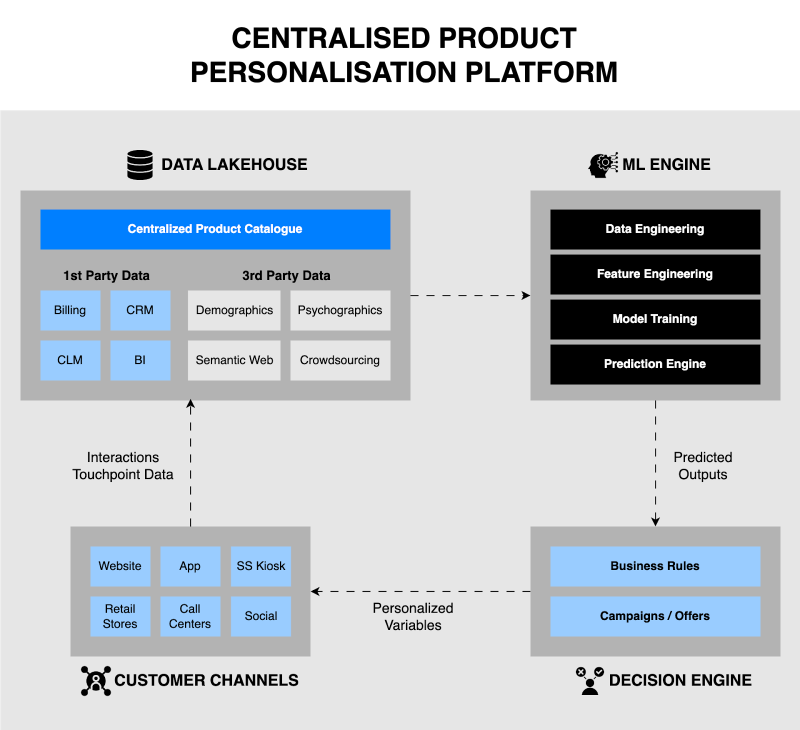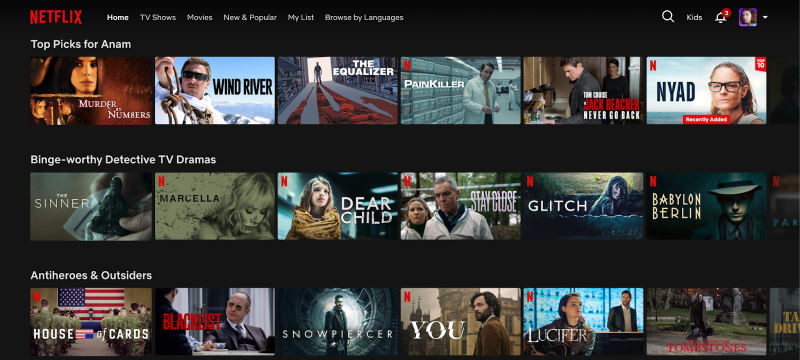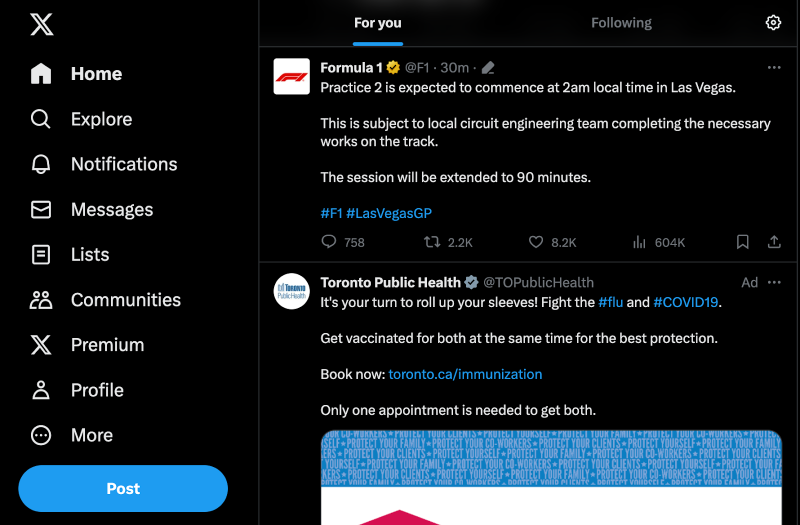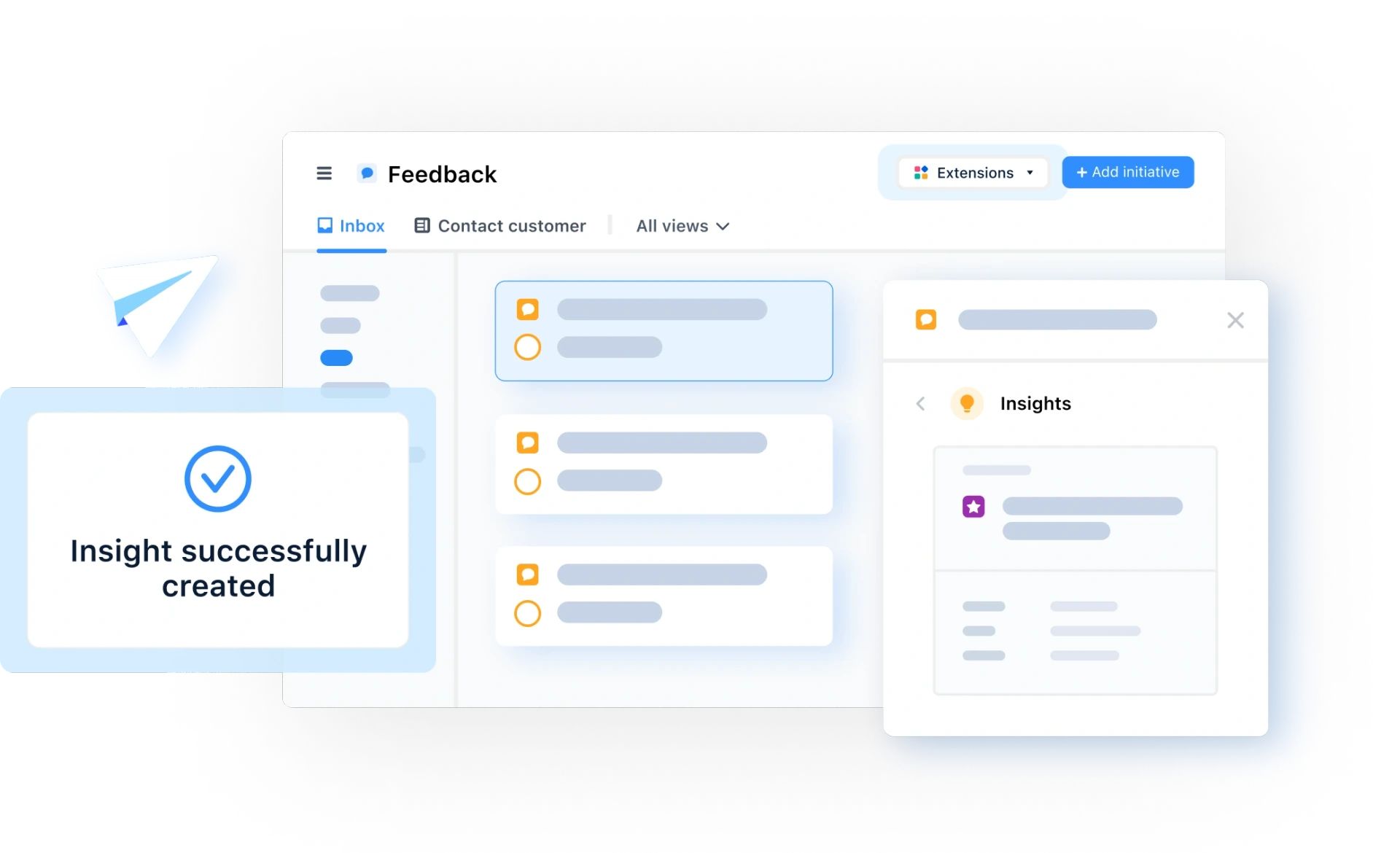Leveraging Machine Learning in Product Personalization (With Real-World Examples)

In a time where our digital footprints are intricately tracked, personalization often surfaces in unnerving ways.
You casually mention planning a vacation with your partner, and your social media feeds are suddenly full of travel ads and hotel recommendations. It feels like an invasion of privacy, a digital eavesdropping that's all too real.
Yet, beyond this (kind of dark) reality, personalization also serves as a great guide through the overwhelming world of digital content.
According to a study by segment,
71% of shoppers feel frustrated when a shopping experience is impersonal.
And Porch Group Media reported that,
47% of shoppers switch to Amazon if their brand doesn’t provide them with relevant product recommendations.
While businesses are now becoming increasingly focused on delivering personalized experiences to their customers, there is still a substantial divergence between what is possible and what is actually being provided to customers.
Amid all of this, one resounding truth reigns supreme: personalization is the cornerstone of customer engagement and loyalty. When done well, it can increase customer loyalty and boost the return on investment of your marketing campaigns.
As consumers increasingly seek tailored experiences, businesses are pressed to adapt and offer products that resonate with individual needs and preferences. This is where the symbiotic relationship between product personalization and machine learning emerges, redefining the landscape of customer-centric innovation.

The engine behind personalization
When it comes to personalized experiences, Machine Learning serves as the backbone driving the tailored digital journey, deciphering not just the present but also predicting the future desires of consumers.
At its core, machine learning is about enabling systems to learn and make predictive insights from data, and it’s this capability that propels product personalization to new heights. It’s not just a set of algorithms; it’s the technology that interprets, forecasts, and customizes digital experiences, making the online world feel remarkably perceptive.

Link to download the gif or high-res image
Central to the efficacy of machine learning in personalization is the role of data. Data acts as the lifeblood for these ML systems, offering the raw material required to build accurate and effective predictive models.
Product personalization platforms utilize a data lakehouse to compile and analyze various data sources, both internal and external. By collecting and analyzing data from various sources, machine learning algorithms can identify patterns and trends that are invisible to the naked eye. This analytical power not only enhances the accuracy of predictions but also ensures that personalization is grounded in actual user behavior and preferences, making it genuinely relevant and effective.
Processed through a machine learning engine, the insights are then leveraged by a decision engine to tailor marketing strategies, which are presented as personalized offers and recommendations for different customer channels.
This transformation from raw data to actionable personalized insights forms an integral bridge to understanding how machine learning catalyzes the customization of user interactions and offerings.
Lastly, a key feature of all effective machine learning systems is the feedback loop. It's what enables the system to evolve and enhance its accuracy. The customer interactions data collected from various channels is fed back into the Data Lakehouse. This continuous stream of information allows the machine learning models to refine their predictions, ensuring that the personalization of customer experiences becomes more precise and relevant over time.

Real-world examples of using machine learning in product personalization
As someone once said, "Theory is splendid but until put into practice, it is useless."
So, let’s pivot away to explore how machine learning enables the transformative use-cases of personalisation in the real-world, showcasing its ability to tailor experiences to individual preferences and behaviors.

Link to download the high-res image
E-commerce sites, led by giants like Amazon and Ebay, have mastered the art of this digital serendipity, presenting items you didn't even know existed but suddenly can't live without. It's like having a personal shopper who understands your tastes better than you do, whispering suggestions before you even knew you wanted them.
Machine Learning enhances the shopping experience through personalized recommendations, often referred to as the Next Best Action (NBA) or Next Best Offer (NBO). Here, ML algorithms analyze individual customer data, such as past purchases, browsing history, items in the cart, and even search queries and predict which products a customer is likely to be interested in next.

Link to download the high-res image
This level of intuitive understanding extends beyond shopping into content streaming platforms.
With machine learning, businesses no longer guess what the consumers desire. Whether it's Netflix suggesting a show you didn't know you were in the mood for or Spotify curating personalized playlists that seem to pluck songs right out of your soul, these platforms offer a direct line to your preferences.
At Netflix, ML algorithms analyze massive amounts of data, including viewer watch history, ratings, and preferences, as well as broader trends in genre popularity, audience demographics and performance of similar titles. By interpreting this data, ML can predict potential success rates of new content, helping Netflix invest in shows and movies that are more likely to be hits with their audience.

Link to download the high-res image
On the social media side, the growing need to capture the continuously decreasing share of the human attention span has led platforms like TikTok and Instagram Reels to curate unique experiences for their users.
Machine Learning algorithms sift through the array of our digital interactions—clicks, likes, shares, time spent on a particular post, friend’s activity, to create a predictive understanding of our preferences. From 15-second snippets tailored to your interests to news articles that perfectly match your tastes, these platforms engineer a captivating and bespoke scrolling experience, ensuring users remain hungry in their digital explorations.
Beyond product and offer recommendations, ML algorithms can also help personalize the website/app UI interfaces by tracking and analyzing user behaviors, such as the pages visited, items clicked on, search queries, and even mouse movements. This data helps in understanding user preferences and typical navigation patterns and allows to adjust the UI dynamically, presenting information, layout, and even color schemes that are more likely to appeal to the individual user.
Navigating challenges, forging solutions
Alongside its marvels, machine learning brings to the forefront critical concerns such as the potential for data breaches that could expose sensitive information, the misuse of personal data for profiling or surveillance, and the perpetuation of existing biases in decision-making algorithms, which can lead to discriminatory outcomes in areas like lending and personalized marketing.
However, I am an optimistic believer of technology and I do not believe that technology will create a generation of idiots or overcome us.
As we navigate this transformative era, it is becoming increasingly clear that building trust will become the defining factor for tech companies. Tech companies will need to play a crucial role in shaping the digital landscape, and their commitment to responsible technology use and user protection will shape their success.
So far, I believe that the industry has been proactive in creating awareness around these issues and promoting advanced techniques such as differential privacy and data encryptions to add robust security layers, ensuring that personal data remains private while still harnessing machine learning’s analytical power.
At the same time, by implementing fairness measures and creating transparency in the model training processes, businesses can ensure that machine learning operates with equity, eradicating biased outcomes in product personalization.
On the implementation side, considerable advancements in GPUs and other cloud-based cost-effective solutions have allowed businesses of all sizes to leverage the power of ML and compete with large enterprises.
However, the battle will continue to unfold but steps like these remind us of the positive impact technology can have in making this world a safer and more equitable space for everyone.

The road ahead
In a time where product personalization meets the power of machine learning, we are stepping into a new era of customer-centric innovation.
It's a realm where businesses will connect with consumers on a deeper, more individual level, offering hyper-personalized products. However,
"the potential of personalization will remain unfulfilled until we go beyond the digital and meet customers on all channels where they exist."
Therefore, the future is also about embracing omnichannel personalization strategies. These strategies will seamlessly integrate customer experiences across various channels — from online platforms to physical stores — ensuring that every interaction is coherent, contextually relevant, and deeply personalized.
The fusion of these approaches will pave the way for a more intuitive, responsive, and engaging consumer experience.

Sami Rehman

Read also






All product feedback in one place

Experience the new way of doing product management



